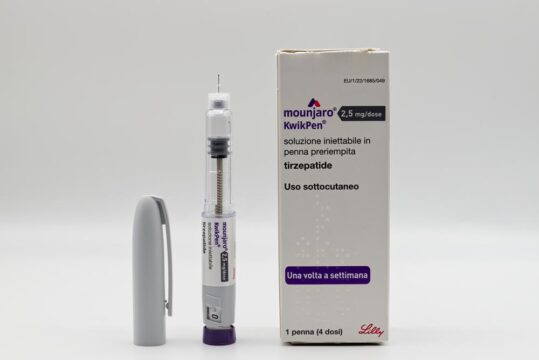Advertisment
How are high and low-risk pulmonary embolisms diagnosed and managed?

Improved diagnostic techniques mean that many more low-risk pulmonary embolisms are being diagnosed now. However, a recent national report identified numerous shortcomings in the management of pulmonary embolism – and this stimulated redesign of the pulmonary embolism service in Swansea, explains Kieron Power, Principal Pharmacist for Thrombosis and Anticoagulation in Swansea Bay University Health Board.
A CTPA (computed tomography pulmonary angiogram) is a scan that enables visualisation of the vasculature of the lungs allowing clinicians to identify defects in perfusion that would indicate the presence of a pulmonary embolism (PE). CTPA is now the first line diagnostic modality for suspected pulmonary embolism, explains Mr Power.
In the past, smaller, low-risk pulmonary emboli could present with non-specific symptoms and initially be diagnosed as respiratory tract infections or pneumonia. When such patients failed to respond to antibiotic treatment a pulmonary embolism might be suspected. Alternatively, if a patient has risk factors for a PE and the managing clinician feels that they can’t rule out a PE, then they may be sent for a CTPA. “Interestingly, … what we’ve seen over recent years is – because of advances in diagnostic tools like CTPA – what we’ve seen is that actually the number of PE diagnoses have gone up but … mortality is actually decreased over time”, says Mr Power. This is thought to be due to the increased sensitivity of CTPA (compared to ventilation-perfusion (VQ) scans). “What we’re actually seeing is a lot more of these lower risk PEs being picked up – which is why it’s a very different scenario maybe from what we would have seen 15-20 years ago, where you were largely picking up the higher risk PEs”, he explains.
Before the new out-patient PE pathway was developed it was felt that there wasn’t a consistent approach within the Health Board towards management of PEs. A review of patients who had deep vein thromboses (DVTs) showed that 50% of them did not receive any follow-up. “Follow-up is important because, number one, we need to see how patients are recovering but also we need to make decisions around long-term management”, explains Mr Power.
Furthermore, the report of a National Confidential Enquiry into Patient Outcome and Death (NCEPOD) in 2019 that looked at the current status of PE management in the UK, flagged up a number of problems. Some of the key points were:
- PE patients were not being followed up correctly
- There was no assessment of PE severity at the point of diagnosis in many cases
- Many patients with low-risk PEs were suitable for ambulation; whereas 37-49% of patients were suitable for an ambulatory care pathway, only 16.4% actually received this type of care. Consequently, many patients were unnecessarily hospitalised.
In addition, the information provided at discharge was often inadequate. “It’s critical that when we discharge a patient from hospital with a PE they are aware of what a bad outcome can look like or what a complication can look like and that they can have access to get immediately back into hospital”, says Mr Power.
In 2020 the British Thoracic Society (BTS) Quality Standards for the Outpatient Management of Pulmonary Embolism were published. The quality standards tackled all the points that had been raised in the NCEPOD report and the team in Swansea used this a prompt to review its own services and a catalyst to develop the new service.
About Kieron Power
Kieron Power is Principal Pharmacist for Thrombosis and Anticoagulation in Swansea Bay University Health Board in South Wales. His role comprises three elements:
- Thrombosis and Anticoagulation Lead for the health board – a governance role that involves leading on policy and guidance within the Health Board and performance monitoring for hospital-acquired thrombosis rates, venous thromboembolism risk assessments and general anticoagulation prescribing factors.
- Running a weekly thrombosis and anticoagulation specialist clinic on behalf of the consultant haematologists.
- Leading and running the pharmacist-led acute VTE service and follow-up service that operate within the health board
Read and watch the full series on our website or on YouTube.
This episode of ‘In Discussion With’ is also on Spotify. Listen to the full podcast now.





